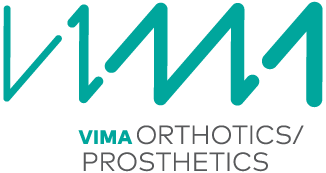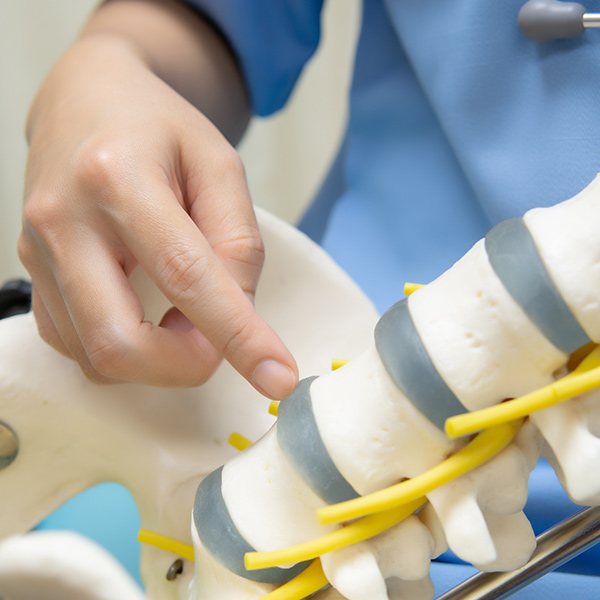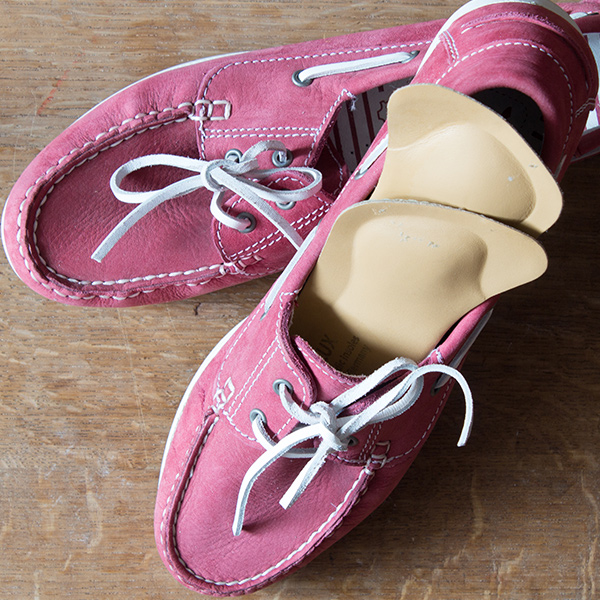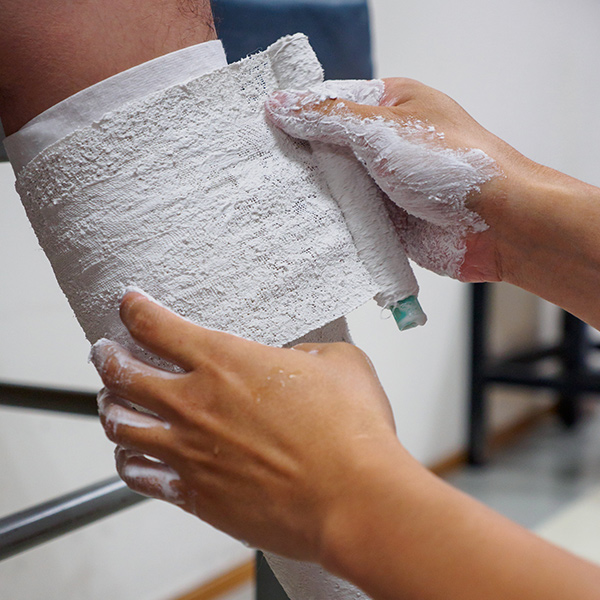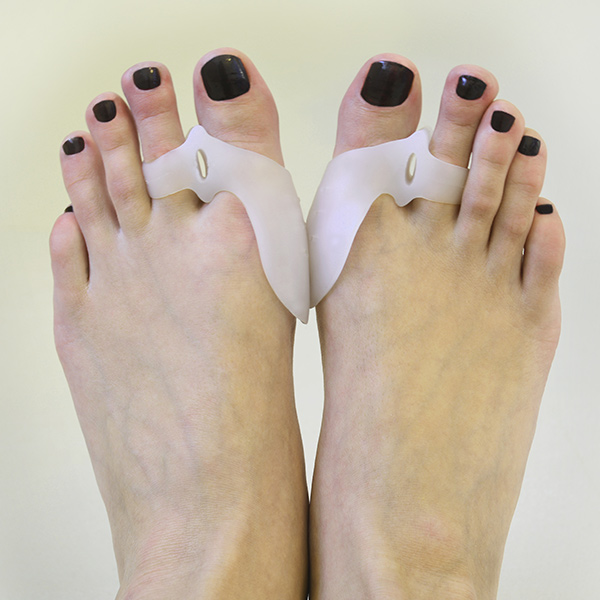“Every mountain top is within reach if you just keep climbing”
— Richard James Molloy
Products and services
- Bespoke Lower Limb Orthoses
- Foot Orthotics
- Orthopeadic Footwear
- Spinal Bracing
- Upper Limb Orthoses
Bespoke Lower Limb Orthoses
We are excited to be part of the P&O world in this moment in time. The depth and breadth of the range of materials that we can use in the custom fabrication of your device is unquestionably the best it has ever been.
We utilise extremely lightweight yet robust materials such as carbon fibre, the latest technology in cushioning materials to optimise the function and comfort of our end products.
Utilising traditional casting as well as new methodologies such as 3D scanning and printing where needed during the design process of the orthosis we are in a position to offer the people of Cyprus multiple good quality options.
The VIMA consultation and process is designed for you to be fully informed on your orthotic options, range of materials, limitations and expectations from your device in a manner not previously available for the people of Cyprus.
Supra-Malleolar Orthoses (SMO) – Hinged or Fixed
As the name suggests these devices extend just above the malleolus and provide foot control in the coronal plane. These tend to be made out of thinner plastics that wrap around the foot with cushioning materials in areas that are expected to exert higher pressures. The use of SMOs depends on symptomology and desired biomechanical objective, usually in cases of excessive mediolateral collapse. This type of orthosis provides coronal plane control but still allows some natural movement of the joints and with the incorporation of a hinge it allows free movement of the ankle joint. At VIMA we have found that an SMO helps with standing, balance and walking and tend to utilise this type of orthosis on our paediatric populations of mild forms of CP, spina bifida or symptomatic hyper pronation.
Ankle Foot Orthosis Fixed or Hinged
As the name suggests this orthosis is used to control movement of the foot and ankle. Fine-tuning of an AFO can also have an effect on the knee and hip, which is particularly useful in the cases of cerebral palsy and other neurological conditions where more proximal control is required. This is surely the most common type of orthosis we use as orthotists.
Incorporating a hinge allows natural movement of the ankle joint in the sagittal plane, if that is desirable, however usually they are fixed at the ankle, which allows us to fine tune depending on the condition we are treating such as:
All of our AFOs are custom made. And can be made out of plastic or carbon fibre. Lately the use of adjustable spring hinges used in combination with lightweight carbon fibre outer shells is providing excellent functional outcomes and higher user acceptability.
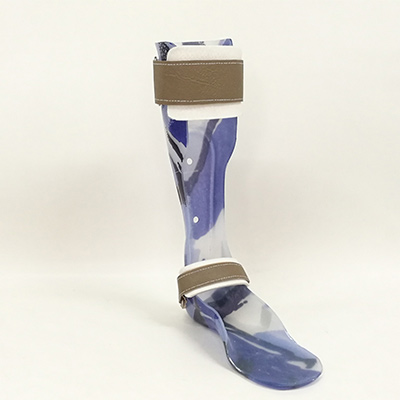
Ground Reaction Ankle Foot Orthosis (GRAFO)
This type of AFO has a particular use when knee control is required when walking and resist crouch gait, which is a common movement disorder in children with cerebral palsy.
Crouch gait is characterised by excessive knee flexion in stance and scissoring, which increases the energy demand, makes walking more difficult and awkward and loads the knee joint in an unnatural position, which could overtime lead to knee degeneration.
It is a fairly complex prescription and harder to manufacture than the typical AFO and like all of our AFOs, it is custom made.
Lately the use of adjustable spring hinges used in combination with lightweight carbon fibre outer shells is providing excellent functional outcomes and higher user acceptability.
Knee Ankle Foot Orthosis (KAFO)
As the name suggests, these are orthoses that extend from the foot up above the knee. It is a highly effective tool in conditions where there is severe weakness in the quadriceps muscle group causing instability at the knee as well as other muscle-wasting conditions such as muscular dystrophy, polio and post-polio syndrome, spinal cord and peripheral nerve injuries.
Traditionally the knee joint was kept locked. Although this may be desired for some populations, it tends to make walking less cosmetic, less efficient and more energy demanding and does not allow for the natural movements of the limb and puts more stress on the hip joint over time. However with the advent of new technologies and rise of Stance Control Orthoses, the knee joint can be locked and unlocked in phases of the gait cycle when needed to provide stability in stance and a more cosmetic and energy efficient walking pattern and flow in swing phase.
At VIMA we can guide you through the selection process of the right knee joint for you, the main drawbacks and advantages and can offer you a comprehensive package comprising of the device and the gait retraining that should be accompanied by it.
For our state of the art lightweight carbon fibre KAFOs we offer a clear device diagnostic testing to ensure the device fits comfortably and adheres to the desired biomechanical objectives and function.
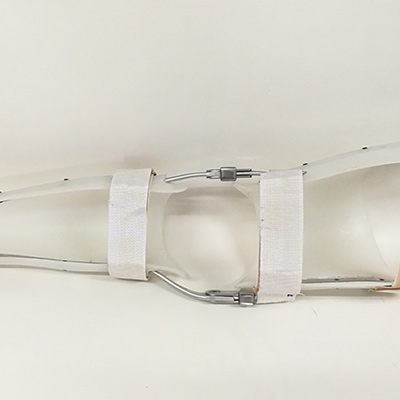
Night Time Splints
These devices can be prescribed for a range of conditions that one of the aims is to improve or maintain range of movement in the lower or upper limb. They are usually very well padded for comfort and use for multiple of hours and can be off-the-shelf or custom made.
Conditions such as plantar fasciitis can benefit from night-time splinting to stretch the fascia and relieve the tension that is felt on the heel first thing in the morning coming out of bed. Other conditions such as a tight flexor pattern in the wrist following a stroke or children with cerebral palsy can be alleviated with the use of night-time splinting.
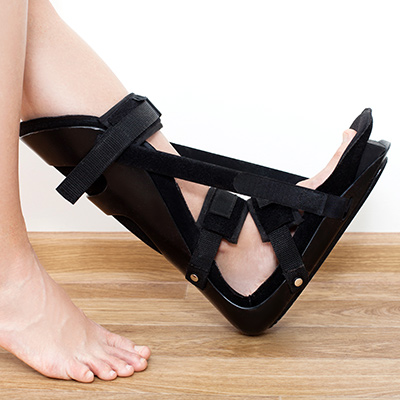
Silicone Ankle Foot Orthosis (SAFO)
These are high-end orthoses that are generally more cosmetically acceptable and used to manage a foot drop but under certain conditions they may also be not suitable. Our specialist orthotist can guide you through the consultation on the drawbacks and advantages and if this device is suitable for your.
SAFOs are designed to eliminate a foot drop in swing phase of walking, reducing the chance of tripping and falling and improving confidence when walking for people with a foot drop. They can be a long lasting solution, durable and more cosmetically pleasing with option of colour tone skin match or your favourite colour, a thinner profile and less cumbersome than traditional AFOs.
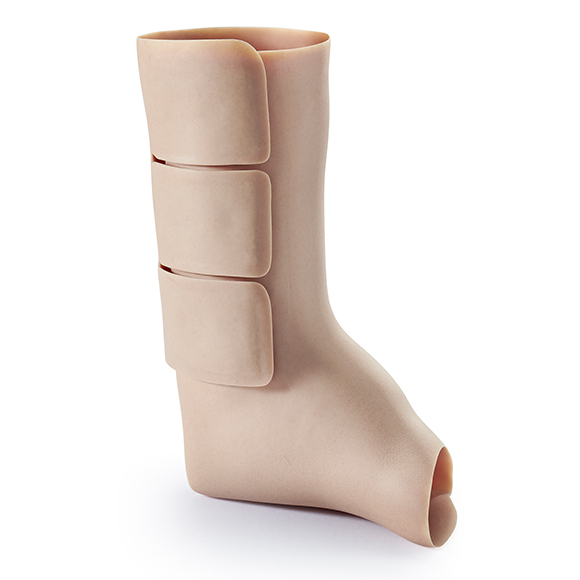
Contraction Correction Device (CCD) Orthosis
The world-renowned CCD braces were originally designed in Oswestry at the Rober Jones and Agnes Hunt (RJAH) Orthopaedic hospital. Our orthotist is trained and qualified to prescribe and fit these types of orthoses.
They serve a specific purpose in reducing muscle contractures and evidence appears to indicate their use for people with upper or lower limb contractures such as children with cerebral palsy or other neurogenic muscle contractures by applying a prolonged low-grade stretch to the muscles. They must be worn for a few hours a day and they can be fine-tuned during the course of the treatment, which usually spans a considerable amount of time.
For children that require CCDs for knee contractures there is the option to adjust the length of the side members as the child grows, which can increase the lifespan of the device.
Water friendly AFOs
As an AFO user living in Cyprus can be a challenge particularly in a hot climate. With the addition of a non-slip foot plate the AFOs can become “water friendly” and allow use in wet conditions.
3D Printing/ 3D Scanning
Traditional techniques in the industry such as the use of plaster of Paris, although reliable, they are wasteful and time consuming, which takes away from what we love most. This is to interact with our patients.
3D Printed orthoses and prosthetic sockets are the new buzzwords in the field or P&O. This is a new manufacturing technique and not yet proven, however the improvements in 3D printing techniques and materials is only going to get better with time. The fundamentals of orthotic input are the basis behind any successful orthotic/ prosthetic prescription.
3D scanning on the other hand is far more advanced and much widely accepted option in the field. At VIMA we have been using this new technology for a number of years and have found that it works best on our AFO and KAFO populations.
We are proud to be the very early adopters and users of these techniques.
Contact us to learn more.
Foot Orthotics
What are foot orthotics?
Orthotics are removable devices you can put into your shoes that contour to the shape of your and are designed to achieve a biomechanical objective and alleviate an area of excessive stress on the foot.
Foot orthotics can help with a myriad of foot and ankle conditions. At VIMA we specialise in the prescription, manufacture and supply of custom made and ready-made foot orthotics designed to treat or manage a foot condition. Our close relationship with our partners ensures we can provide you with the highest quality materials and finishing.
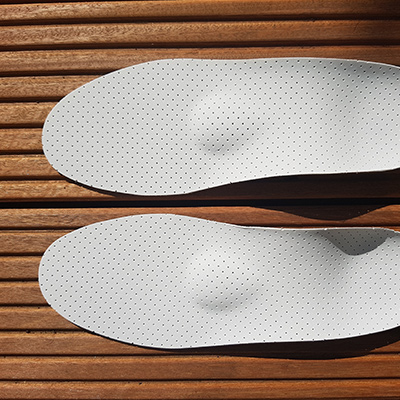
Problem
We use our feet daily and the demand on the feet is considerable. The structures that support and assist the function of the foot such as joints, muscles and tendons have to withstand the increased demand from forces and pressures that are exerted on them. This can lead to severe pathology such as tendinopathy or other bone and joint pathology over time. Orthotics is a non-invasive cost effective approach that may yield excellent results for foot conditions.
Some of the common conditions that we can treat with foot orthotics are:
- Forefoot pain or Metatarsalgia
- Heel Pain
- Plantar Fasciitis
- Heel Spurs
- Sever’s Disease (Paediatric)
- Midfoot Arthritis
- Lateral Impingement Syndrome
- MTSS – Medial Tibial Stress Syndrome (Shin Splints)
- Hallux Limitus
- Hallux Rigidus
- Stress Fractures of the metatarsals
- Bunions
- Tibialis Posterior Tendon Dysfunction
- Flat Feet
- Peroneal Tendinopathy
- Cavus Feet
- Morton’s Neuroma
- Freiberg’s Disease
- Sesamoiditis
- MTP Synovitis (Capsulitis)
Main aim from the use of orthotics is to influence the biomechanics of the foot in order to:
- Reduce pain
- Prevent or reduce the rate of foot deformity progression
- Relieve plantar foot pressure
- Reduce overloading on certain foot structures
Custom foot orthotics
During the initial consultation and after a thorough examination of your needs and foot, we then can use techniques to capture the exact foot contours, which is the basis of a good custom build insole. Arguably the end-user’s understanding of the design features and being on board is key in a successful orthotic prescription and we will spend time with you at this stage to discuss any concerns and material selection.
Once we assess your needs and decide on which methodology and materials to use to yield maximum results, we will use one of the following to capture your foot shape:
- 3D Scan of your feet
- Foam Impression box
- Plaster of Paris
Our trusted partners abroad can deliver consistently exceptional quality of insoles thereby enhancing the chances of a successful outcome.
Fitting stage
At this stage, we ensure the orthotics are fitting comfortable within your shoes and are not causing you any undue discomfort.
Insoles can take some time to get used to and occasionally some footwear adaptations on the patient’s side to accommodate.
We also understand that orthotics for some of these conditions may need additional or alternative input and we can guide you via our referees’ routes to the most appropriate health care professional or orthopaedic consultant.
Orthopeadic Footwear
Orthopaedic footwear are the recommended solution when there are gross deformities of the feet, which are not easily accommodated within commercially available footwear.
Range of options
We are in a position to offer a range of options of orthopaedic footwear. There are three main types of footwear that we can supply:
- Stock footwear – these are usually with additional depth or width than commercially available footwear that can be helpful when we aim to accommodate orthotics, however there is limited range of colours and styles.
- Modular footwear – these are in between full custom made and stock footwear. These are made on a standard last that can be modified to match the individual’s feet dimensions. There are range of styles and colours available.
- Full Bespoke – every detail of the footwear is controlled, any style or colour available. These are made out of various measurements, casts and 3D scans of your feet.
Foot measurements
We have years of experience in prescribing complex orthopaedic footwear. We use traditional methods such as plaster casts and detailed measurements as well as the latest technologies in 3D scanning for shoes and boots. From an exact match of feet dimensions and shape capture that can yield the best possible last allows for a solid basis to build a prescription. We are in a unique position with close links to many English footwear-making companies with hundreds of years of combined experience in making orthopaedic footwear.
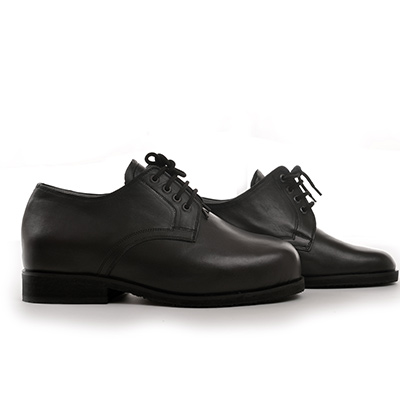
Conditions usually treated with orthopaedic footwear
Different medical conditions may need slightly different input and footwear design. Below are some examples of the conditions that we can help you with orthopaedic footwear:
Diabetes Mellitus – Mainstay of treatment and an absolute necessity for people with deformed feet and healed ulcers to reduce the likelihood of recurrence. All our diabetic footwear are made to fit custom made insoles to dissipate loads across the soles and accommodate foot deformities, lined and well padded, minimal seam lines and rocker sole adjustments are only few of the variables we can control with our orthopaedic footwear for offloading.
Rheumatoid Arthritis – Rheumatoid Arthritis presents typically with forefoot deformities. The types of footwear for RA are deeper and wider across the forefoot and the incorporation of insoles can enhance the comfort of these types of shoes.
Lymph oedema – Usually very difficult to find accommodative footwear, particularly in the winter months and rainy days due to the volume because of the residual swelling. We can offer a range of styles and materials in the prescription that can help.
Excessive foot deformities – Either to hide an excessive leg length difference; accommodate forefoot deformities such as hammertoes and bunions or users that need easy access.
Paediatric footwear
Orthopaedic footwear at times may be overused. We believe a more structured approach to paediatric footwear prescription is best. At times we are in a position to recommend commercially available footwear, which can yield equal outcomes at a fraction of the cost. In addition our various footwear suppliers offer multiple trainer styles and other cosmetically appealing styles.
Accommodative footwear for AFOs – We can provide you with footwear options that accommodate your child’s AFO with ease at your request. Most trainers can accommodate an AFO but on certain occasions accommodative footwear can yield better functional outcomes.
Spinal Bracing
What is spinal bracing?
Spinal Bracing involves any type of back bracing for many conditions of the spine. There are different types and designs of back braces for conditions such as scoliosis & kyphosis, spinal trauma, diseases of the disks and chronic lower back pain amongst others.
We can help you as a patient or as a referee to present you the options for the most appropriate type of orthosis. Age is not a factor when presented with back problems. We use a number of different materials and types of spinal braces to either correct, support or protect the spine.
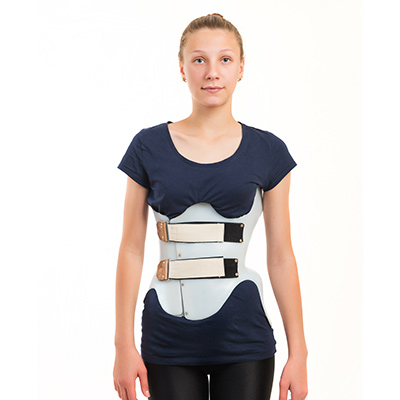
Trauma spinal braces
These are used to treat patients that have suffered spinal trauma and to immobilise the spine, which is important in doing so as movement of one part of the spine may lead to extra movement or compensation in the segments close to it. At VIMA we prescribe plastic bivalve or wrap-around back braces with soft padding, which are almost exclusively custom made from a scan or cast to enhance compliance and comfort as well as a variety of stock spinal braces if appropriate.
Scoliosis
We are strong believers that orthotics and spinal bracing alongside physiotherapy has a crucial role to play in managing scoliosis at a young age to reduce the rate of progression and prevent surgery.
Typically a back brace for scoliosis is used when the curve is between 20 to 40 degrees alongside specialist physiotherapy exercise programmes. Our orthotist can assist you in the process and take the necessary measurements, casts or scans for maximum outcome. We work closely with our referees and the allied health professionals involved in your care to co-ordinate your care and set appropriate goals. Our close workshop alliances have many years in the manufacture of these braces with exceptional built in quality and use of materials as well as a plethora of colours and patterns to suit your individual style.
Upper Limb Orthoses
With the advent of new technologies and improvements in surgical techniques the necessity for specialised upper limb orthoses is often a lot less than previous decades. However, there are still many upper limb injuries that are treated conservatively such as tennis elbow, wrist sprains as well as conditions such as rheumatoid arthritis that temporary immobilisation of joints can provide relief from pain.
Contracture management orthoses for upper limb may that be in the elbow joint or wrist and fingers are used extensively to maintain range of motion post operatively or post-Botox injections.
Post – operative orthoses are also used to help immobilise or limit range of movement in a joint to help the healing and rehabilitation phase.
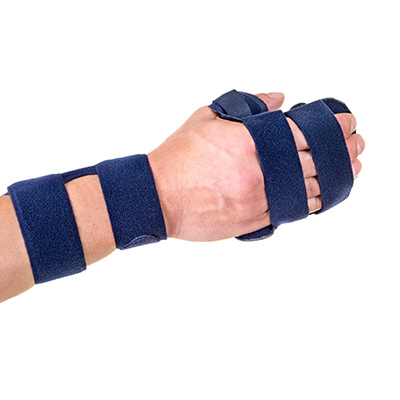
Useful info and tips
What should I expect from my first appointment?
During the first appointment we will go through your condition, how it affects you and we will discuss and assess your needs and various options so that you have a holistic insight as to what the different solutions are.
We are keen supporters of measured outcome measures so expect to be given questionnaires before your appointment as well as perform certain tasks that we can measure and review through your journey.
Final step is to take any necessary measures and/ or cast and discuss the details of the device.
We require a 50% deposit for any device or orthosis that is custom made.
You can look here for more details regarding the Process.
What should you bring along to your first appointment?
Bring along a spare pair of shorts if you are coming in for any lower limb assessment, fitting of your ankle foot orthosis, insoles or orthopaedic footwear or at any review appointments for these devices
For spinal bracing it is best to put on a relatively tight fitting T-Shirt out of cotton. This is helpful, as we will either take a full body cast or a 3D Scan.
How do I look after my brace?
We have a dedicated section on our FAQs to how to look after your brace.
The basic rule of thumb is to use a damp cloth with neutral soap and avoid sources of direct heat to dry them as heat and wet conditions tend to have a negative effect on the materials and the glues that we use.
